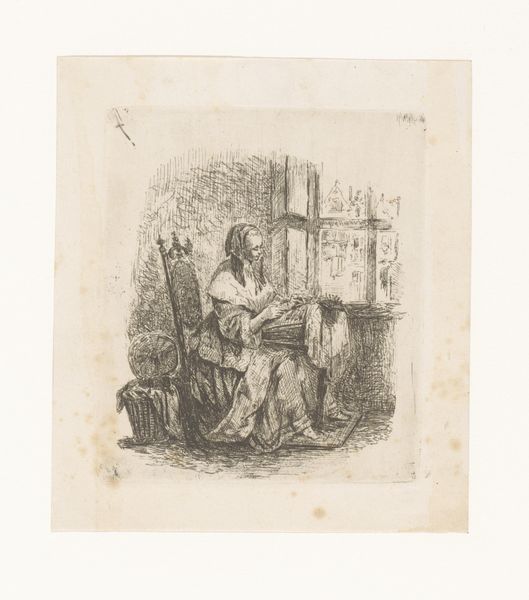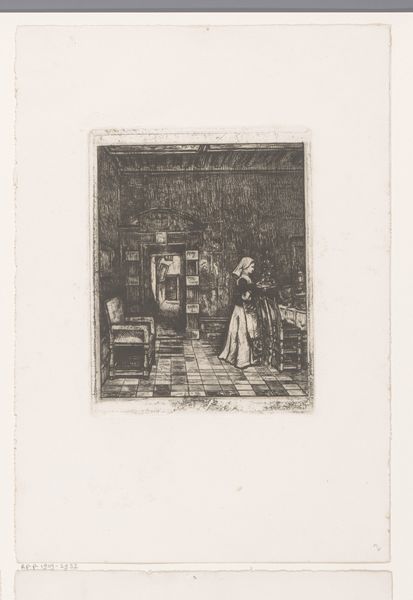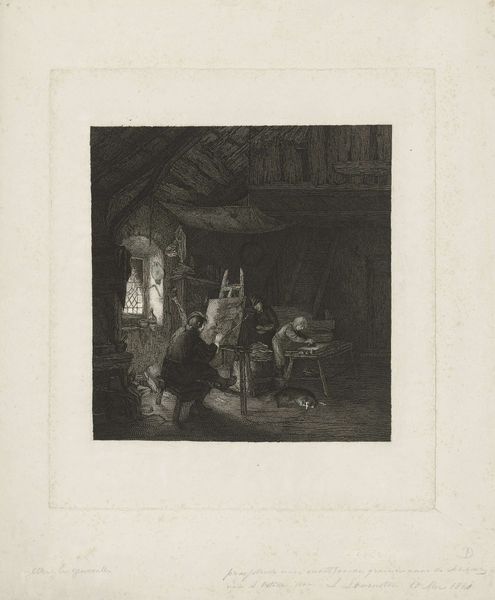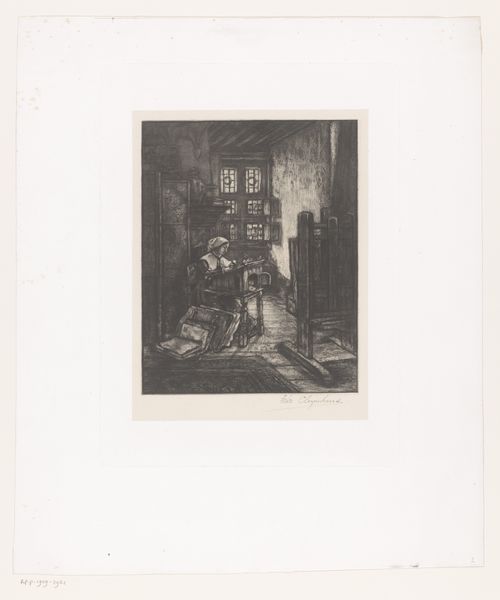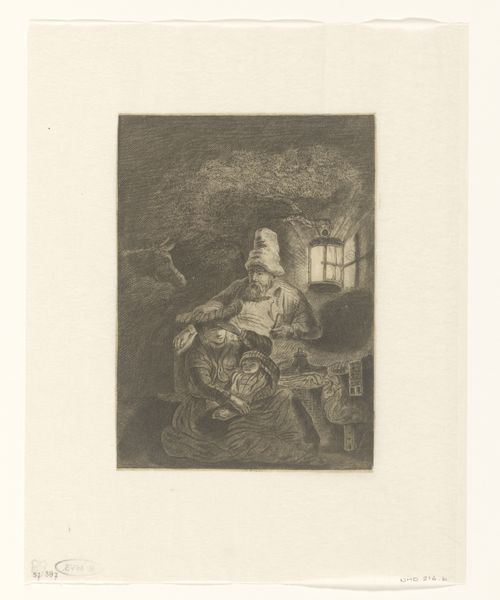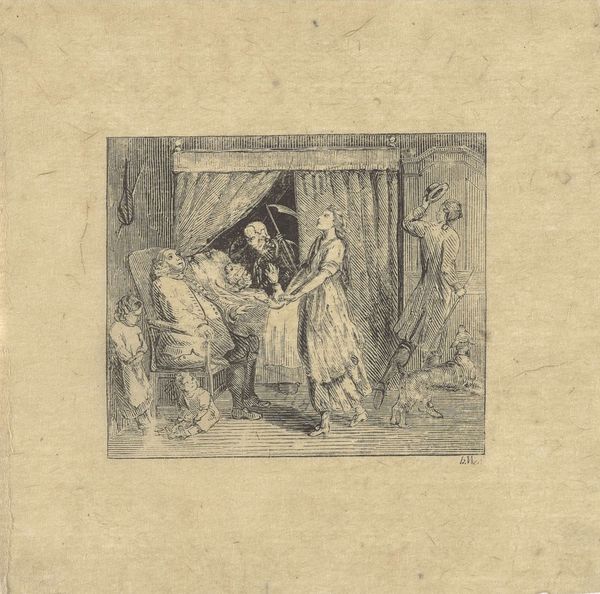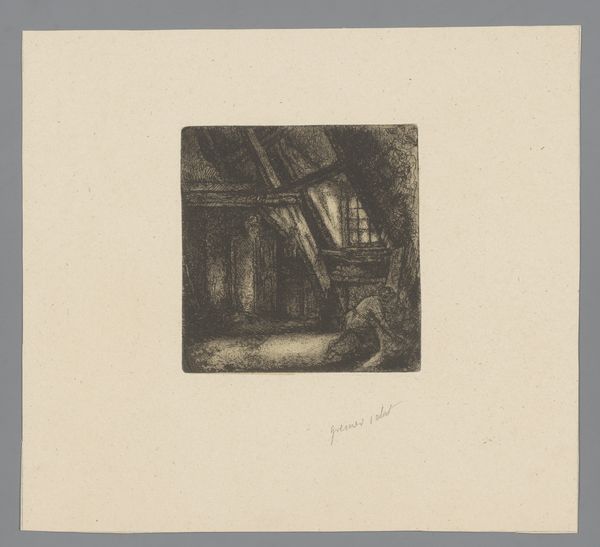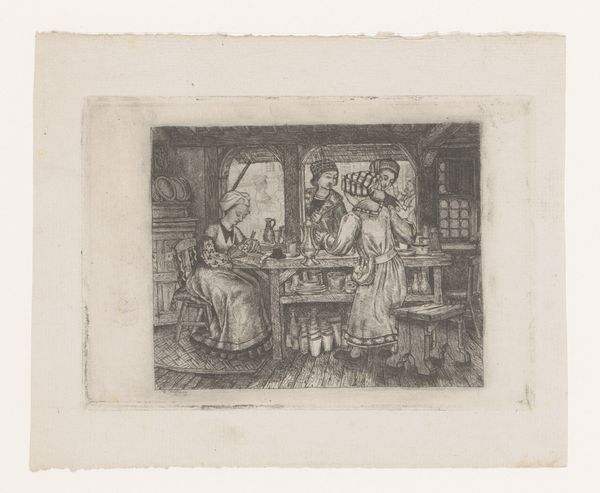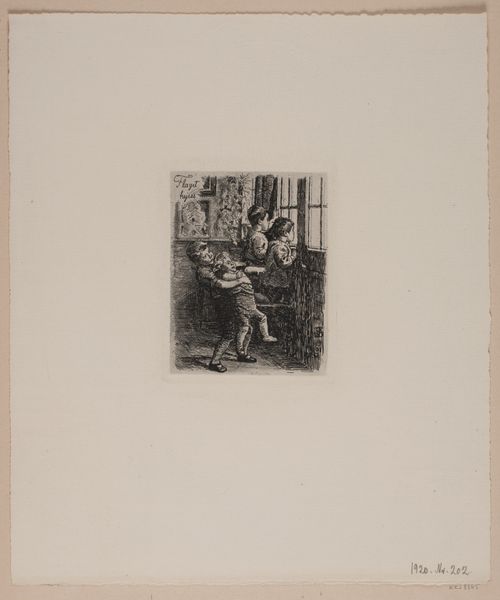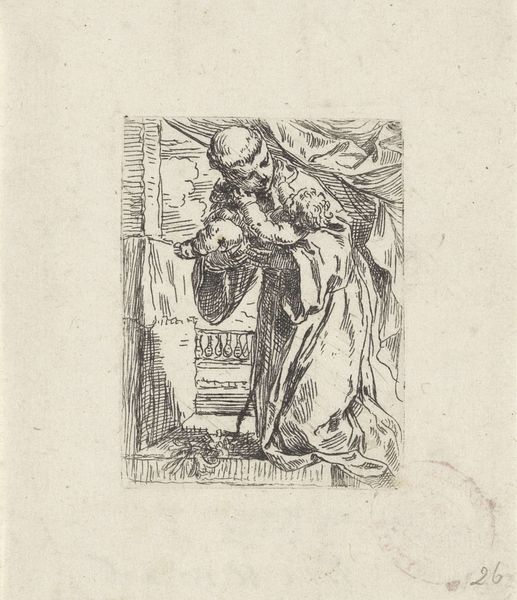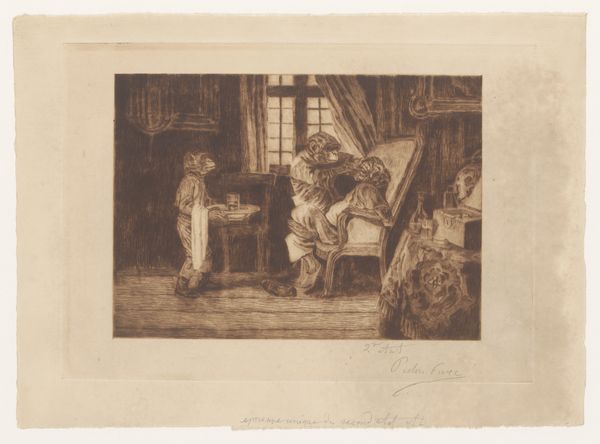
drawing, print, etching, paper, ink
#
portrait
#
drawing
#
ink paper printed
# print
#
etching
#
pencil sketch
#
old engraving style
#
paper
#
ink
#
pen-ink sketch
#
genre-painting
#
realism
Dimensions: height 73 mm, width 52 mm
Copyright: Rijks Museum: Open Domain
Curator: It's my pleasure to introduce "Oude kantwerkster," or "Old Lacemaker," an etching by Adrien Joseph Verhoeven-Ball, created sometime between 1834 and 1882. Editor: A first glance gives me an impression of quietude, almost like stepping into a memory. The way the etching captures light is quite remarkable, considering the medium. Curator: Absolutely, the light seems almost to emanate from within, focusing the viewer’s attention on the lacemaker. The woman depicted, what symbols might her presence evoke? To me, she represents diligence and tradition. The very act of lacemaking is steeped in history, each knot and stitch holding cultural memory. Editor: It does raise interesting questions about the means of its production, doesn’t it? Here we have an etching reproducing an image of labor. Who was consuming this image? And did it offer a romanticized view that was disconnected from the often harsh realities of women working in textile trades? Curator: That is quite possible, because this image resonates far beyond a simple depiction of labour; it embodies ideals. The act of meticulously creating lace carries echoes of feminine virtue, patience, and a connection to past generations. Editor: Yes, but let’s also consider the materiality of the image itself—the ink, the paper. Etching as a reproductive technology allowed images like this to circulate more widely, potentially turning the subject and its implied virtues into commodities themselves. It is interesting to consider the intersection of the industrial age and craft itself. Curator: I appreciate your take on materiality, it brings a grounded perspective. Thinking symbolically, even the window with the lattice acts as a lens on both domesticity and freedom; it represents connection between interior and exterior realms, tradition, change. Editor: And if we think about access and privilege, we should acknowledge that viewing and possessing images was likely exclusive to the wealthier population and very different from the world of a traditional lace maker herself. Curator: Food for thought about those realities, even now. For me, beyond those factors is the piece’s power as an emotional document that gives respect to a certain timeless craft. Editor: Indeed, by focusing on its production and distribution, one may actually honor those laborers. Thank you for considering it with me!
Comments
No comments
Be the first to comment and join the conversation on the ultimate creative platform.
